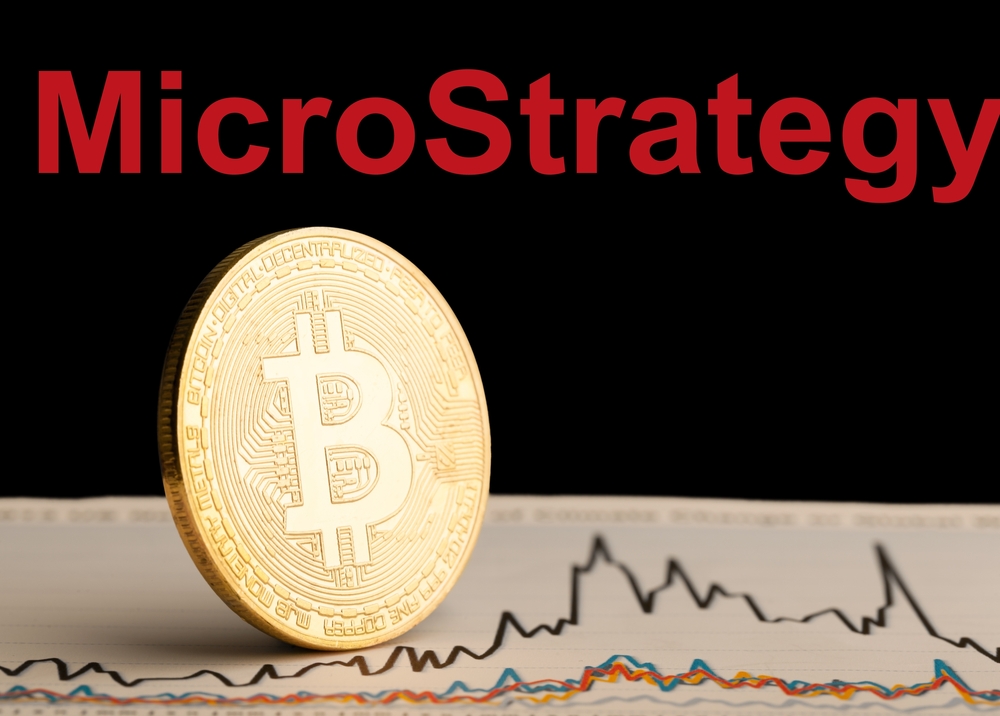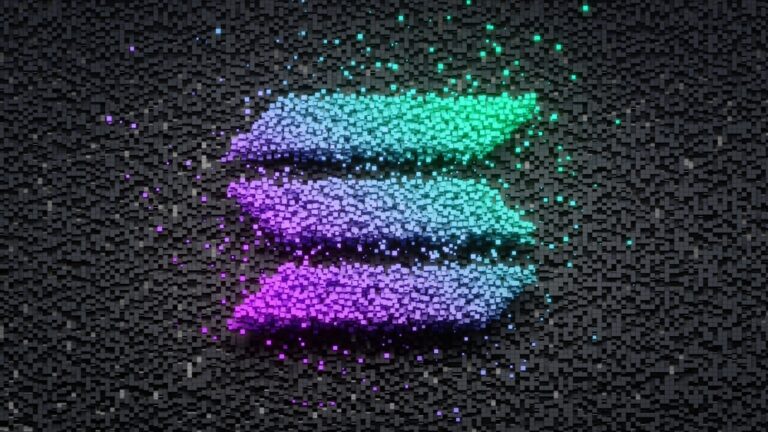Table of Contents
ToggleIntroduction
Polygon, the popular blockchain network, is undergoing a major change. The network’s native token MATIC is transitioning to a new token called POL. This shift affects users, developers, and investors in the Polygon ecosystem.
To change from MATIC to POL, users need to participate in the official migration process once it’s announced by the Polygon team. This will likely involve connecting to a designated platform or smart contract to swap MATIC tokens for POL tokens. The exact steps and timeline for this migration will be shared by Polygon in the future.
This change is part of Polygon’s broader evolution. It aims to improve the network’s scalability, security, and functionality. While the transition may seem complex, it’s important for the long-term growth of the Polygon ecosystem.
Key Takeaways
- Users will need to swap MATIC for POL through an official migration process
- The transition aims to enhance Polygon’s network capabilities
- Stay informed about Polygon’s announcements for specific migration steps and timelines
Understanding Polygon and Its Ecosystem
Polygon is a popular blockchain platform that aims to improve Ethereum’s scalability and usability. It uses MATIC tokens as its native cryptocurrency for various functions within its ecosystem.
What Is Polygon?
Polygon is a layer 2 scaling solution for Ethereum. It helps make transactions faster and cheaper. The platform uses its own blockchain network alongside Ethereum’s main chain. This setup allows for quicker processing of transactions and smart contracts.
Polygon supports many types of decentralized apps (dApps). These include finance, gaming, and social media apps. Developers can easily build and launch their projects on Polygon. The network uses a Proof-of-Stake system to validate transactions. This method is more energy-efficient than traditional mining.
The Role of MATIC in the Polygon Network
MATIC is the native token of the Polygon network. It plays a key part in keeping the system running smoothly. Users pay transaction fees with MATIC tokens. These fees are usually much lower than on Ethereum’s main network.
Staking is another important use for MATIC tokens. People can lock up their tokens to help secure the network. In return, they earn rewards. This process helps keep Polygon safe and working well.
MATIC also gives holders voting rights. They can have a say in important decisions about the network’s future. This feature makes Polygon more community-driven.
Preparing for Migration: A Step-by-Step Guide
Migrating from MATIC to POL requires careful planning and execution. The process involves using the Polygon Portal interface and interacting with specific contracts on Ethereum.
Prerequisites for Migration
Before starting the migration, make sure you have:
- A MetaMask wallet with MATIC tokens
- Enough ETH for gas fees
- Access to the Polygon Portal website
Check your MATIC balance in MetaMask. The migration process converts MATIC tokens to POL on a 1:1 basis.
Make sure your ETH balance covers transaction costs. Ethereum gas fees can vary, so check current prices before proceeding.
Ensure your internet connection is stable. The migration involves multiple steps and transactions. A poor connection could disrupt the process.
Using the Polygon Portal Interface
To migrate your tokens:
- Connect your MetaMask wallet to the Polygon Portal
- Select “Migrate to POL” from the main menu
- Enter the amount of MATIC you want to convert
- Review the transaction details carefully
- Confirm the transaction in MetaMask
The portal interface guides you through each step. It shows your current MATIC balance and the expected POL output.
After confirming, the migration contract processes your request. This can take a few minutes. Do not close the browser or disconnect your wallet during this time.
Once complete, the portal displays your new POL balance. Check your MetaMask wallet to verify the transaction.
Transition to POL Token
The shift from MATIC to POL tokens marks a key change for the network. This transition brings updates to smart contracts and introduces new features for users.
Why is Migration Necessary?
The move to POL tokens aims to improve the network’s performance and capabilities. Contract updates are needed to support new functions and enhance security. The change also allows for better scalability as the network grows.
POL tokens offer faster transaction speeds and lower fees. This helps users save money when using the network. The migration also opens up new opportunities for developers to build more advanced applications.
Current MATIC token holders don’t need to worry. Their tokens will be automatically converted to POL at a 1:1 ratio. This ensures a smooth transition for everyone involved.
Comparing MATIC and POL Tokens
POL tokens build on the strengths of MATIC while adding new features. Here’s a quick comparison:
- Supply: Both have a max supply of 10 billion tokens
- Use: POL can be used in more ways on the network
- Speed: POL transactions are faster than MATIC
- Fees: POL has lower transaction costs
POL tokens also enable new governance features. This gives users more say in the network’s future. The updated smart contracts make POL more versatile for developers.
One key difference is that POL tokens can’t be changed for 10 years. This adds stability to the network’s token system. It helps users and developers plan for the long term.
Upgrading Smart Contracts for POL
Switching from MATIC to POL requires careful attention to smart contract upgrades and compatibility. This change impacts existing DApps and contracts on the network.
Impact on DApps and Smart Contracts
The move to POL affects DApps and smart contracts currently running on MATIC. Developers need to review and update their code to ensure it works with POL. This may involve changing contract addresses and adjusting how transactions are processed.
Some DApps might need major rewrites. Others may only need small tweaks. It depends on how closely tied they are to MATIC-specific features.
Testing is crucial. Developers should run thorough tests on POL test networks before going live. This helps catch any issues early.
Smart Contract Compatibility
POL aims for backwards compatibility with existing MATIC contracts. Many contracts should work without changes. But there may be some exceptions.
Developers should check if their contracts use any MATIC-specific functions. These might need updates to work with POL.
Upgradeable smart contracts offer an easier path. They can be updated without deploying entirely new contracts. This saves time and keeps user data intact.
Non-upgradeable contracts pose more challenges. They may need to be redeployed, which can disrupt services and user data.
Staking and Validation in the New Ecosystem
The shift from MATIC to POL brings changes to staking and validation on Polygon 2.0. Users will need to update their approach to participate in the new system.
How Staking Changes with POL
POL becomes the new staking token for Polygon 2.0. Users must swap their MATIC for POL to continue staking. The process aims to be smooth, with clear steps for token migration.
Staking rewards may differ under the new system. POL could offer different yield rates compared to MATIC. Users should check the updated reward structure.
Liquid staking options may expand with POL. This allows users to stake their tokens while maintaining some liquidity. It’s a flexible way to earn rewards without fully locking up funds.
Becoming a Validator on Polygon 2.0
Validators play a key role in Polygon’s proof-of-stake system. To become a validator, users need to meet new requirements set by Polygon 2.0.
Hardware and software specs may change. Validators should upgrade their setups to meet new standards. This ensures smooth operation of the network.
The minimum stake to run a validator node could be different with POL. Prospective validators should check the updated threshold.
Validator duties may include new tasks in Polygon 2.0. They might need to learn new protocols or use different tools to validate transactions.
Economic and Tokenomic Considerations
The shift from MATIC to POL brings important changes to the token ecosystem. Holders need to understand how this affects rewards and the community treasury.
Understanding Tokenomics Post-Migration
Tokenomics play a key role in the move from MATIC to POL. The new POL tokens will have a different supply and distribution model. This impacts how tokens circulate and their value.
The total supply of POL tokens may differ from MATIC. This could affect scarcity and price. Token holders should check the new emission schedule.
POL tokens may have new utility within the ecosystem. This could include governance rights or access to certain features. Users need to learn about any new use cases.
The Future of POL Token Rewards
POL token rewards will likely change from the MATIC system. The reward structure may shift to encourage specific behaviors or participation.
Staking rewards could be adjusted. Users might see different annual percentage yields (APY) for locking up their POL tokens. The length of staking periods may also change.
The community treasury could play a bigger role in distributing rewards. This might lead to more community-driven initiatives and governance.
Liquidity mining programs may be introduced or modified. This could offer new ways for users to earn POL tokens by providing liquidity to decentralized exchanges.
Security and Consensus Mechanisms
Switching from MATIC to POL involves important changes in security and consensus. The shift to zkEVM brings new mechanisms for transaction validation and data handling.
From PoS to zkEVM
The move from Proof-of-Stake (PoS) to zkEVM marks a big change in how the network works. PoS relies on validators staking tokens to secure the network. zkEVM uses zero-knowledge proofs to verify transactions.
This new system speeds up transactions and lowers costs. It also makes the network more secure. Validators no longer need to hold large amounts of tokens. Instead, the system uses math to check if transactions are valid.
zkEVM keeps the benefits of PoS while adding extra security. It stops some common attacks that can happen in PoS systems.
Data Availability and Security
Data availability is key in the new POL system. It ensures all network data is accessible and secure. The network uses special committees to manage this.
These data availability committees help keep the network running smoothly. They make sure all needed info is there when users want to check transactions.
The committees work with the zkEVM system. Together, they create a strong security setup. This protects user funds and keeps the network safe from attacks.
POL’s system aims to be both fast and secure. It balances these needs to create a reliable blockchain network.
User Experience and Adoption
The shift from MATIC to POL affects how users interact with the Polygon ecosystem. This change brings new features and processes that impact daily usage and require adaptation.
Improving User Interaction
User experience plays a key role in the MATIC to POL migration. Users need clear guidance on new wallet interfaces and token management.
Updated apps and websites should reflect the POL branding. This helps users recognize and trust the new ecosystem.
Tools like block explorers and analytics platforms require updates to show POL data accurately. This ensures users can track transactions and balances easily.
Community forums and support channels are vital. They provide spaces for users to ask questions and share experiences with the new POL system.
Ensuring Smooth Transition for Users
A step-by-step migration guide is essential. It should explain how to convert MATIC to POL and update wallet settings.
Automatic conversion options can simplify the process for less tech-savvy users. This reduces the risk of mistakes during manual token swaps.
Graphical user interfaces need redesigns to clearly show POL balances and transaction details. This helps prevent confusion between old and new tokens.
A grace period allows users time to complete the migration. During this time, both MATIC and POL tokens remain functional to avoid disruptions.
Education is key. Video tutorials, infographics, and FAQs can help users understand the benefits and processes of the new POL system.
Polygon’s Development Roadmap
Polygon is pushing forward with major upgrades and improvements to its network. The project aims to enhance scalability, security, and functionality through several key initiatives and milestones.
Polygon 2.0 and Beyond
Polygon 2.0 marks a significant leap for the network. This upgrade introduces a new architecture called “ZK-powered chains“. These chains use zero-knowledge proofs to boost security and efficiency.
The new design allows for better interoperability between different blockchain networks. It also improves transaction speeds and lowers costs for users.
Polygon Labs plans to roll out Polygon 2.0 in phases. Each phase will bring new features and capabilities to the network.
Key Milestones and Updates
Polygon’s roadmap includes several important updates:
- Launch of Polygon zkEVM mainnet
- Introduction of Polygon ID for digital identity management
- Deployment of Polygon Nightfall for enhanced privacy
- Release of Polygon Avail for data availability
The project team regularly shares progress through “Polygon Improvement Proposals” (PIPs). These proposals outline technical changes and upgrades to the network.
Sandeep Nailwal, co-founder of Polygon, often provides insights on upcoming developments. His updates help keep the community informed about the project’s direction.
Interoperability and Network Bridges
Interoperability and network bridges play a key role in connecting different blockchain networks. These solutions enable assets and data to move seamlessly between chains, expanding the functionality of blockchain ecosystems.
Using Bridges for Cross-chain Capability
Network bridges act as connectors between different blockchains. They allow users to transfer tokens and data across chains. For example, bridges enable moving ERC-20 tokens from Ethereum to Polygon.
Bridges work by locking assets on one chain and minting equivalent tokens on another. This process maintains the total supply across networks. Users can later redeem their original assets by burning the minted tokens.
Many centralized exchanges (CEXes) now support direct deposits and withdrawals using network bridges. This simplifies the process of moving assets between chains for users.
Polygon’s Aggregation Layer Strategy
Polygon’s aggregation layer aims to improve blockchain interoperability. It acts as a hub connecting various layer-2 solutions and sidechains to Ethereum.
The aggregation layer, also called ZkEVM, uses zero-knowledge proofs to validate transactions. This approach increases throughput and reduces costs while maintaining Ethereum’s security.
Polygon Portal serves as the main bridge between Polygon and Ethereum. It allows users to move assets between the two networks quickly and securely.
By focusing on interoperability, Polygon positions itself as part of the “value layer of the internet”. This strategy aims to create a seamless web of interconnected blockchains.
Navigating Centralized and Decentralized Exchanges
Changing from MATIC to POL involves using exchanges that support both tokens. The process differs between centralized and decentralized platforms, each with unique steps and considerations.
Exchange Support for POL Token
Not all exchanges list the POL token. Before swapping, check if your preferred platform supports POL. Major centralized exchanges often add new tokens quickly, but smaller ones may lag behind.
Decentralized exchanges (DEXes) typically list newer tokens faster. They connect directly to blockchain networks, allowing trades between various tokens without intermediaries.
Some exchanges may require users to complete additional verification steps before trading POL. This can include submitting ID documents or passing extra security checks.
Always verify the contract address of POL before trading to avoid scams or fake tokens. Official project websites or trusted blockchain explorers are reliable sources for this information.
How to Swap on Centralized Exchanges (CEXes)
To swap MATIC for POL on a CEX, users first need to deposit MATIC into their exchange account. This usually involves sending MATIC from a personal wallet to the exchange’s deposit address.
Once MATIC is in the account, navigate to the trading pair MATIC/POL if available. If not, users may need to first exchange MATIC for a common base currency like USDT, then trade that for POL.
Place a market or limit order to execute the swap. Market orders fill immediately at current prices, while limit orders allow setting a specific price.
After the swap, withdraw POL to a compatible wallet. Be aware of withdrawal fees and minimum amounts set by the exchange.
Remember to factor in trading fees, which vary between exchanges. Some platforms offer fee discounts for high-volume traders or those holding the exchange’s native token.
Frequently Asked Questions
The transition from MATIC to POL involves specific steps on different platforms. Users need to follow particular procedures depending on their chosen exchange or wallet.
What steps should I follow to migrate from MATIC to POL on Coinbase?
Coinbase users should check their account notifications for official migration instructions. They may need to update their wallet addresses and ensure their MATIC tokens are in the correct wallet.
Users should also verify if Coinbase supports the automatic conversion process. If not, manual token swapping might be necessary.
How do I convert my MATIC tokens to POL tokens on Binance?
Binance typically handles token migrations automatically. Users should ensure their MATIC tokens are in their Binance wallet before the announced migration date.
It’s crucial to monitor Binance’s official announcements for any required actions. Users may need to enable certain settings or confirm the conversion process.
Are there any specific actions required from Ledger hardware wallet users for MATIC to POL transition?
Ledger users often need to update their device firmware and the associated wallet app. They should follow Ledger’s official guidelines for the MATIC to POL transition.
Users may need to manually approve the token swap through their Ledger device. Backing up the wallet before proceeding with any changes is always recommended.
What is the procedure for transitioning MATIC to POL on CoinDCX?
CoinDCX users should check the exchange’s official announcements for specific instructions. They may need to deposit their MATIC tokens into their CoinDCX wallet by a certain deadline.
The exchange might handle the conversion automatically. Users should verify if they need to opt-in for the migration or if any additional steps are required.
Can you guide me through the process of converting MATIC to POL on OKX?
OKX users should first ensure their MATIC tokens are in their OKX wallet. They should then look for an official announcement from OKX regarding the conversion process.
Users may need to navigate to a specific section of their account to initiate or confirm the conversion. It’s important to complete any required steps before the migration deadline.
Will my MATIC tokens be automatically converted to POL in the migration process?
The automatic conversion of MATIC to POL depends on the platform or wallet holding the tokens. Some exchanges handle the process automatically, while others require user action.
Users should always check official announcements from their chosen platform. They may need to opt-in, confirm the conversion, or take specific steps to ensure their tokens are migrated correctly.



















